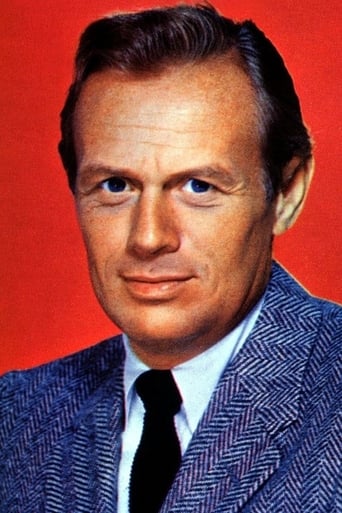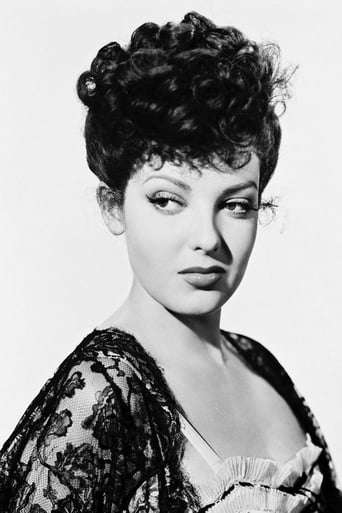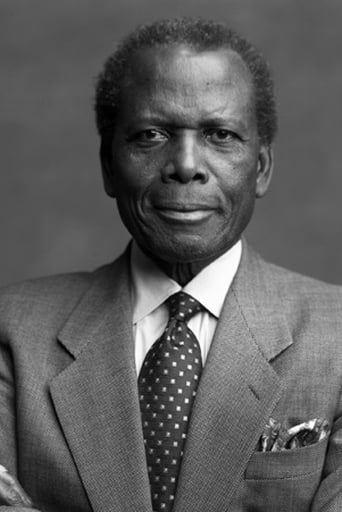VividSimon
Simply Perfect
LouHomey
From my favorite movies..
Roman Sampson
One of the most extraordinary films you will see this year. Take that as you want.
Kaydan Christian
A terrific literary drama and character piece that shows how the process of creating art can be seen differently by those doing it and those looking at it from the outside.
ofpsmith
No Way Out was Sidney Poitier's debut film it he sure benefited from beginners luck. Dr. Luther Brooks (Poitier) is an African American doctor who is assigned to treat two white trash robbers in the prison ward, brothers Johnny (Dick Paxton) and Ray Biddle (Richard Widmark). While Luther is tending to Johnny's wounds Biddle jeers at Luther and shouts racial slurs. When Johnny dies of a brain tumor Biddle starts holding Luther responsible because of his ethnicity. Although Luther had no part in Johnny's death, Biddle insists that it was him. Dr. Dan Wharton (Stephen McNally) Luther's superior believes Luther and so do the rest of the hospital staff, but Biddle tells his white trash friends and a big race riot erupts in the city. This overall is a great movie and I highly recommend it. Poitier would prove himself time and time again after this film.
JoeytheBrit
Luther Brooks (Sidney Poitier) suffers a baptism of fire on his first night as a fully-fledged doctor on a hospital's prison ward when a villain gunned down during an armed robbery dies while being treated by him under the hateful gaze of the patient's racist brother Ray Biddle (Richard Widmark). Although Brooks wasn't to blame for the patient's death, Biddle convinces himself otherwise and allows the episode to fuel his racism.Judging by the limited release this movie received in 1950, racial hatred was as much of a hot potato back then as it is today, although it's difficult to see a film which makes such unflinching use of racist language ever being made today. The fact that the vituperative epithets snarled by Widmark's rabid racist are still familiar yet now almost completely taboo probably gives them a power that is greater today than it was back in 1950.While the film rightly condemns intolerance it also goes to lengths to show that we are nearly all to some degree infected with it. While Stephen McNally's senior doctor is probably the only person who seems untouched by racist feelings - and therefore comes across as the least believable of a cast of intelligently scripted characters - he still employs a black woman as a maid, which would be seen by some as subjugation; Biddle is an out-and-out racist, although Mankiewicz and Samuels' script suggest deep-seated reasons for this prejudice that they choose not to explore too deeply. Linda Darnell's cynical ex-wife of the dead man - who she cheated on with Biddle - must overcome an innate intolerance that is prone to manipulation by those who wish to exploit that weakness within all of us. Biddle's second brother, the deaf and dumb George Biddle, is probably most representative of the population as a whole: the man or woman who might not be racist themselves but who pretends not to notice, or chooses not to speak out against, the racist acts of others, thereby becoming an unwitting aide to the committed racist. Even Poitier's besieged doctor must overcome an understandable prejudice in order to treat a man who despises him. None of the characters are shaded completely black or white, giving them all a depth and verisimilitude that's rare for a film of this era (although not for a creation of Mankiewicz).Poitier, in his screen debut, is given only fourth billing although he probably enjoys the most screen time (which, given the film's subject matter, is quite ironic when you think about it) and gives a deceptively confident performance. However, it's Widmark, who was quite a liberal in real life, who commands the screen as the racist low life who is as much a victim of his prejudices as those who feel his wrath.No Way Out is a taut, intelligently scripted film that, in a way, fell victim to its themes of racial intolerance and the apathy that allows it to thrive. We can only hope that its use of racially inflammatory language throughout doesn't mean that it will be quietly consigned to that limbo reserved for works no longer considered to be socially or politically acceptable.
dongwangfu
Whether you like Mankiewicz or not (generally, I find his films too melodramatic), this one is very worth watching just as a window into the past.It was released in 1950, and gives a fascinating critique of race in America when Martin Luther King, Jr., was still in Divinity School. The resentments and misconceptions of the various characters -- the white hospital administrator who believes graduating black doctors will increase funding, the black elevator operator who believes black doctors have to pass tests white doctors don't. Then there is the depiction of racism as virulent, irrational, and pathological -- Widmark takes the bus to crazy-town and doesn't take a transfer for the return trip. But the one character that holds everything together is Linda Darnell's Edie Johnson. She's the character who develops -- everyone else is basically static. She's a lot like Widmark's Ray Biddle. As a woman from the wrong side of the tracks, she's not gotten a lot of breaks. So she's prey to his "blame-the-negro" rhetoric. But the best scene in the movie is one in which she is in her apartment with Biddle's brother George. She hears a domestic dispute out the window, and maybe it is a coincidence, but it spurs her to action -- and the action she takes is the hinge for the end of the movie. So while this movie had a lot of Drama (Widmark chews the scenery in a way the more understated Poitier is generally able to avoid), it was truly fascinating.
PWNYCNY
Kudos to Hollywood for making this movie. Here it's no holds barred as blacks ans whites go at each other, no mincing words here. The sparks fly and the fists are flying too as mistrust mixed with innuendo provides the catalyst for violence. Although at times stagy, the story swiftly moves along as the a community goes spiraling downward toward anarchy. Richard Widmark gives an outstanding performance as a race-baiting hoodlum whose target is a black doctor, played by Sidney Poitier whose performance is excellent. This movie effectively shows what happens when a community is divided and how things can get quickly out of hand when there is no third-party to smooth things over. This movie represents Hollywood's wake up call to the United States to get its act together and avoid the carnage of sectarian violence.







